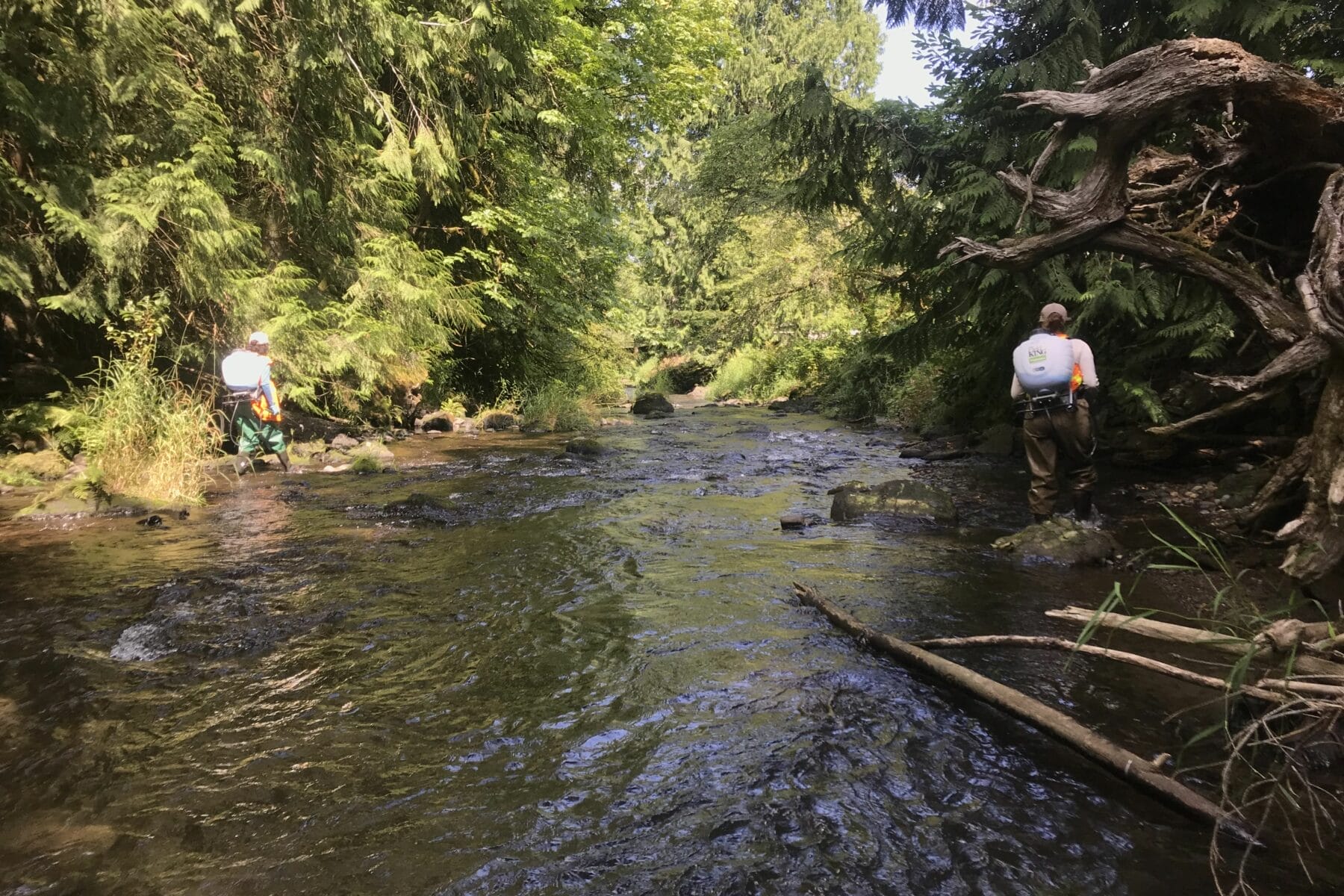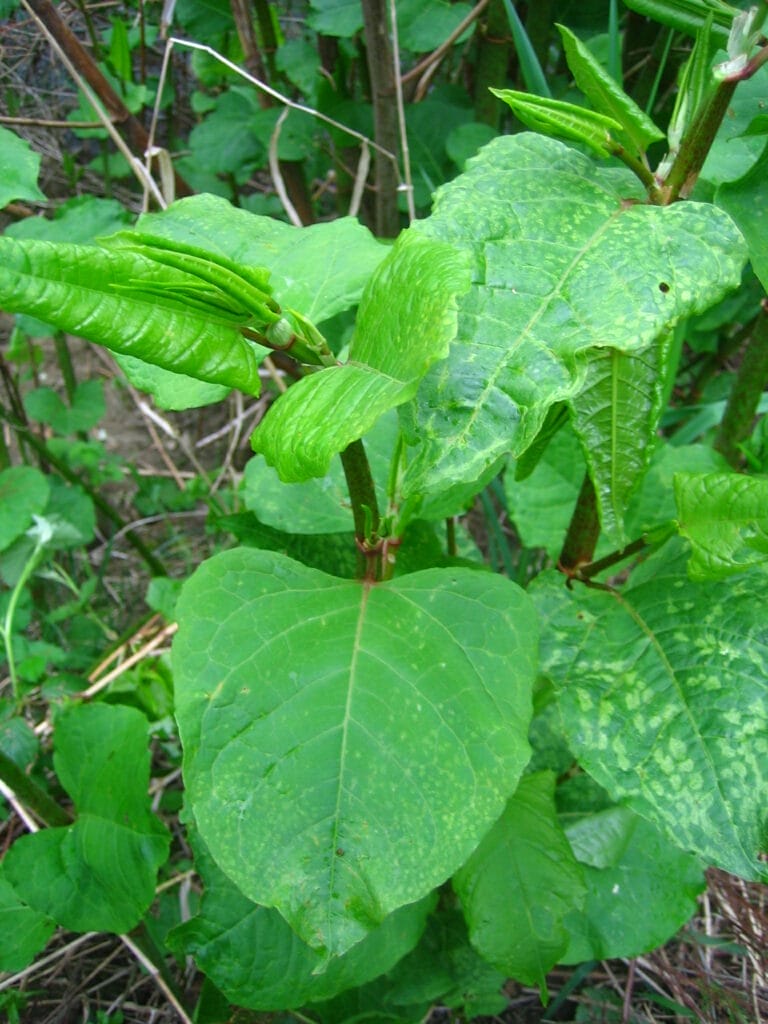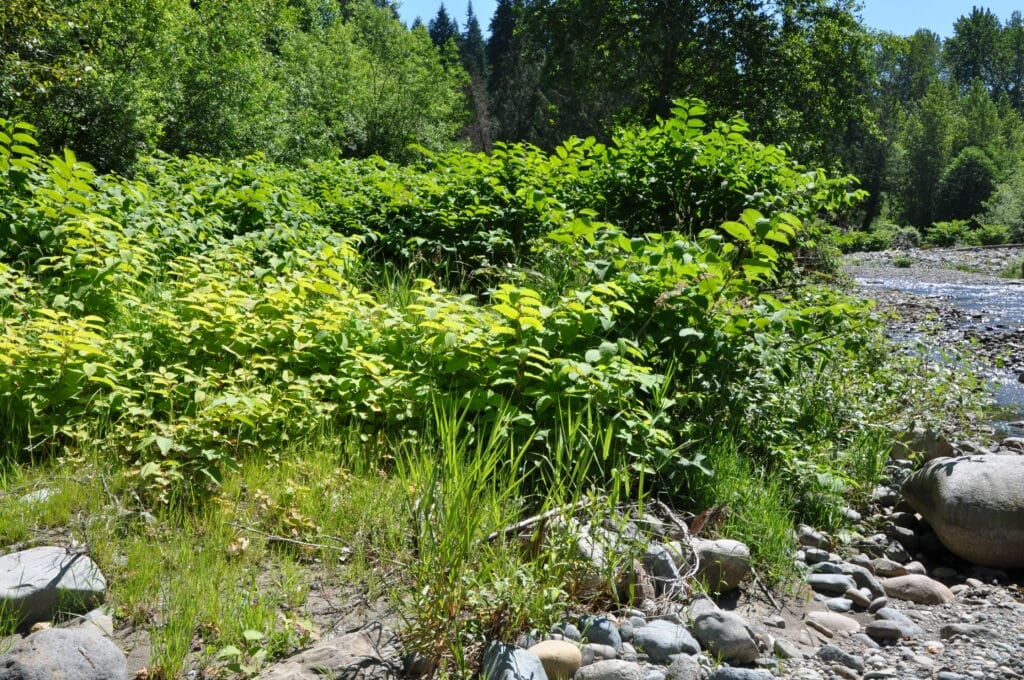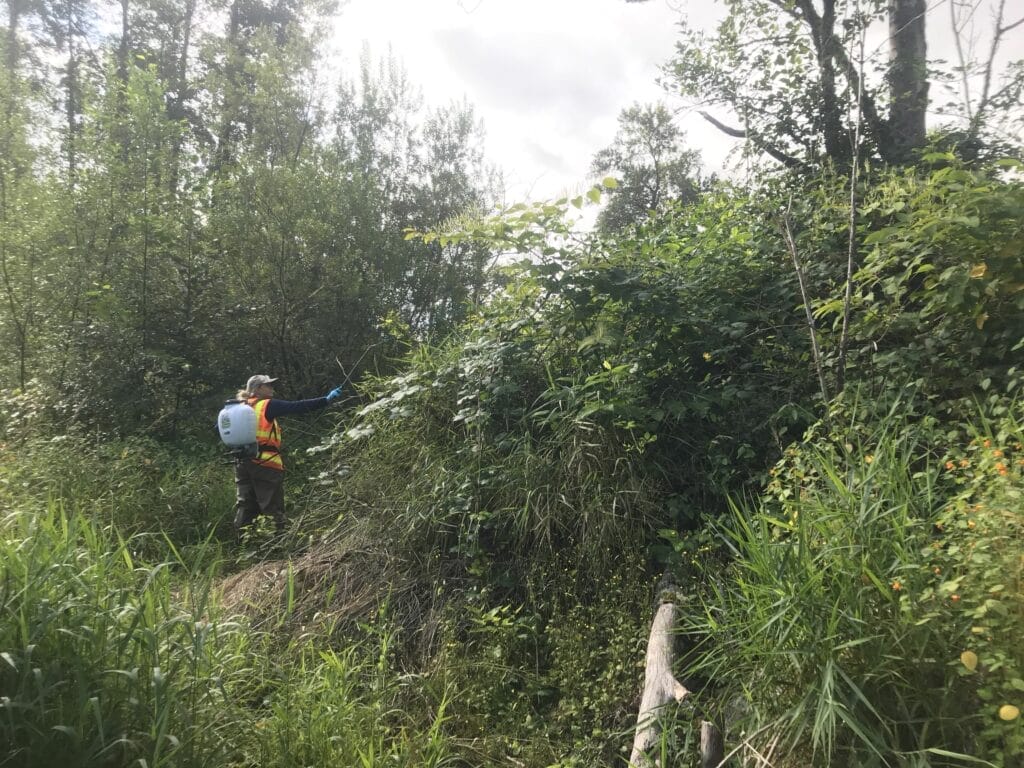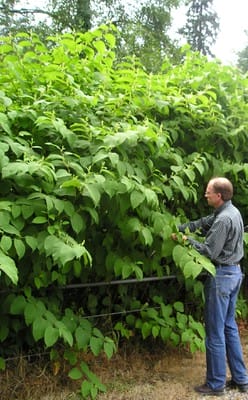Knotweed Control
The Greenway Trust has been surveying and successfully treating knotweed along Issaquah Creek and the Raging River for 15+ years.
In the Pacific Northwest, rivers are corridors along which life thrives. Native trees and shrubs shade creeks and rivers, keeping water cool and providing habitat for native creatures big and small. These ecological systems are integral for the health of native salmon species which spawn in gravel beds and spend early years in freshwater before heading out to sea. Despite the vital role rivers play in the health of our natural areas, they are fragile and can be quickly overtaken by non-native vegetation, like knotweed.
Knotweed is a highly adaptable plant. It spreads easily through root and stem fragments, has no natural predators in the Pacific Northwest, and can overwhelm riparian systems by outcompeting native plants. Its prolific foliage in the summer stunts native plant germination and growth. However, when it dies back in the winter, it leaves the soil in infested areas unprotected from rain and erosion.
The Mountains to Sound Greenway Trust’s work on knotweed control began with surveys along the Raging River and Issaquah Creek in 2007 and 2008, respectively. These surveys found large infestations on public and private lands within each watershed. As a non-profit, the Greenway Trust has the unique ability to engage with private landowners that is not available to agency partners. Since inception, the program worked with public land managers to systematically control knotweed and worked to engage private landowners in the program by educating them on the importance of their backyard riparian habitats to local species.
In Issaquah Creek, the program has treated over 65 acres of knotweed on lands managed by the City of Issaquah, King County, the Washington State Parks & Recreation Commission, the Department of Natural Resources, and over 130 private landowners. In addition to vegetation control, the Greenway Trust also installs native plants to help kickstart reforestation efforts in support of habitat recovery goals outline in the WRIA (Water Resource Inventory Areas) 8 Chinook Salmon Recovery Plan.
Along the Raging River, over 70 acres of knotweed and blackberry have been controlled and more than 10,000 native plants have been installed along the riverbanks. This project is critically important for Chinook salmon in the Snoqualmie River system as gravel from the bed of the Raging River creates the ideal conditions for redds (where female salmon deposit eggs when spawning) downstream. By complementing public land manager efforts to control knotweed on private lands, the Greenway Trust’s work helps restore Chinook habitat in the Snoqualmie Watershed.
Funding
The Greenway Trust partners with the following organizations and agencies to complete knotweed control objectives along Issaquah Creek and the Raging River:
- The King County Flood Control District Cooperative Watershed Management grant program within the Snoqualmie Watershed Forum (Raging River) and the WRIA 8 Lake Washington/Cedar/Sammamish watershed (Issaquah Creek)
- Washington State Department of Ecology
- Washington State Department of Agriculture
- City of Issaquah
- Washington State Department of Natural Resources
- Washington State Parks & Recreation Commission

